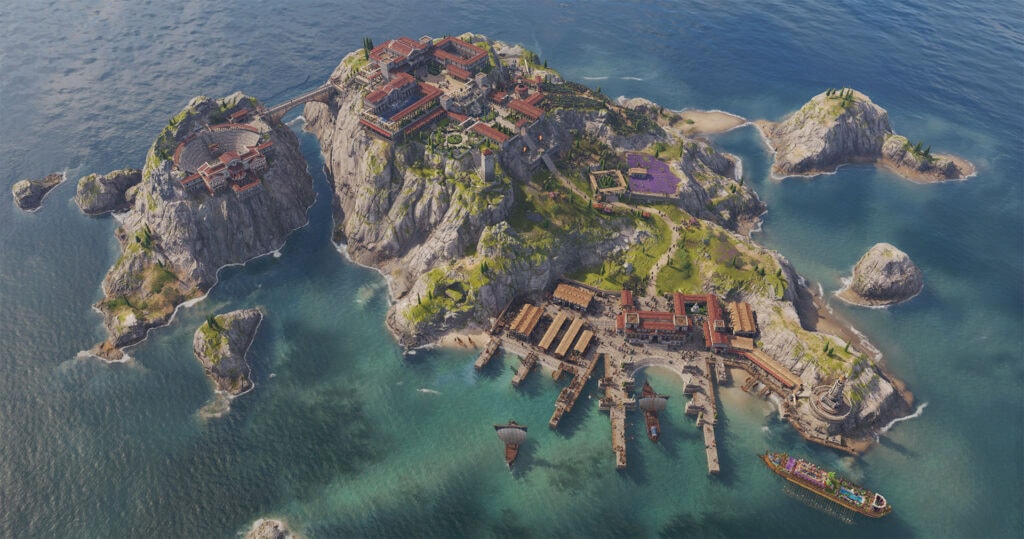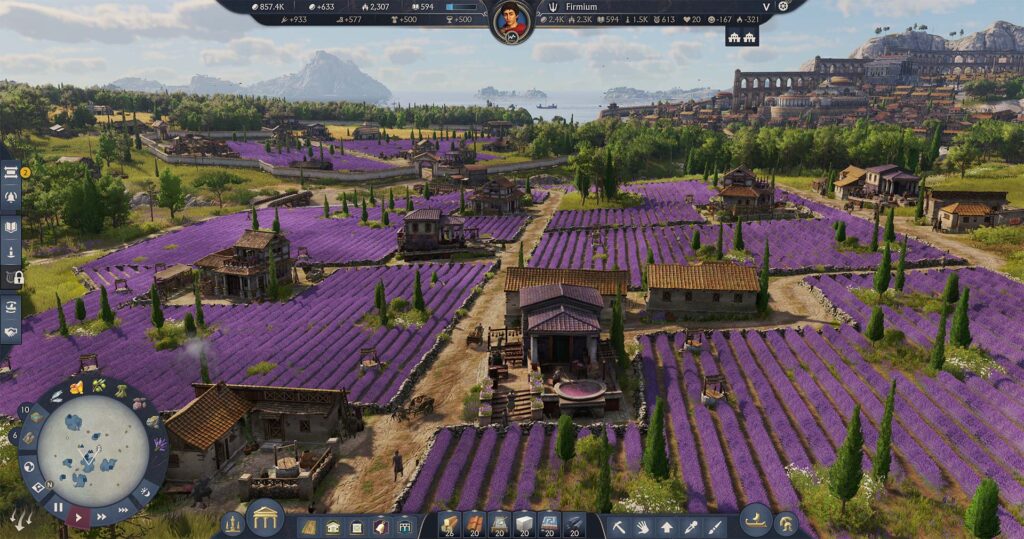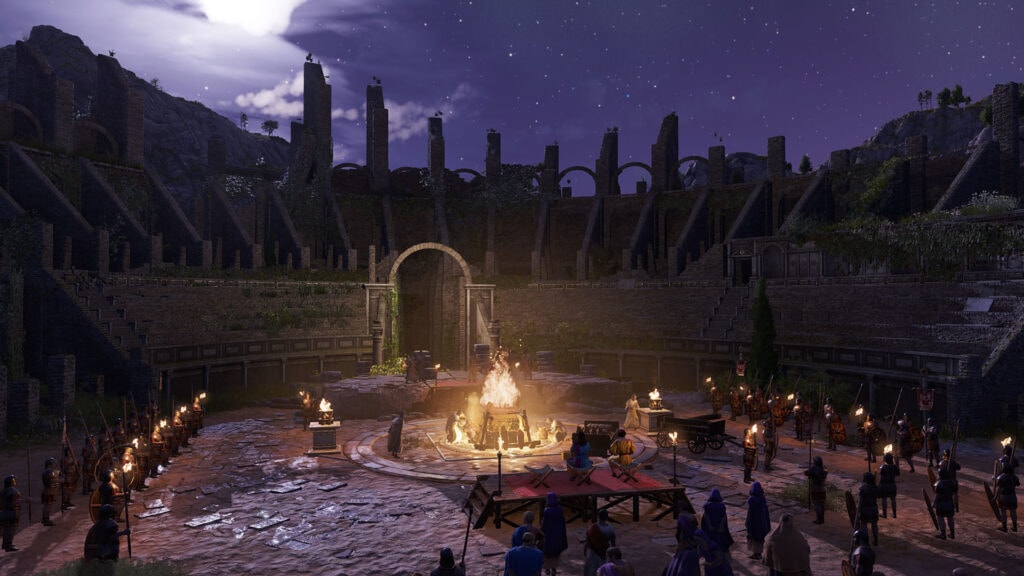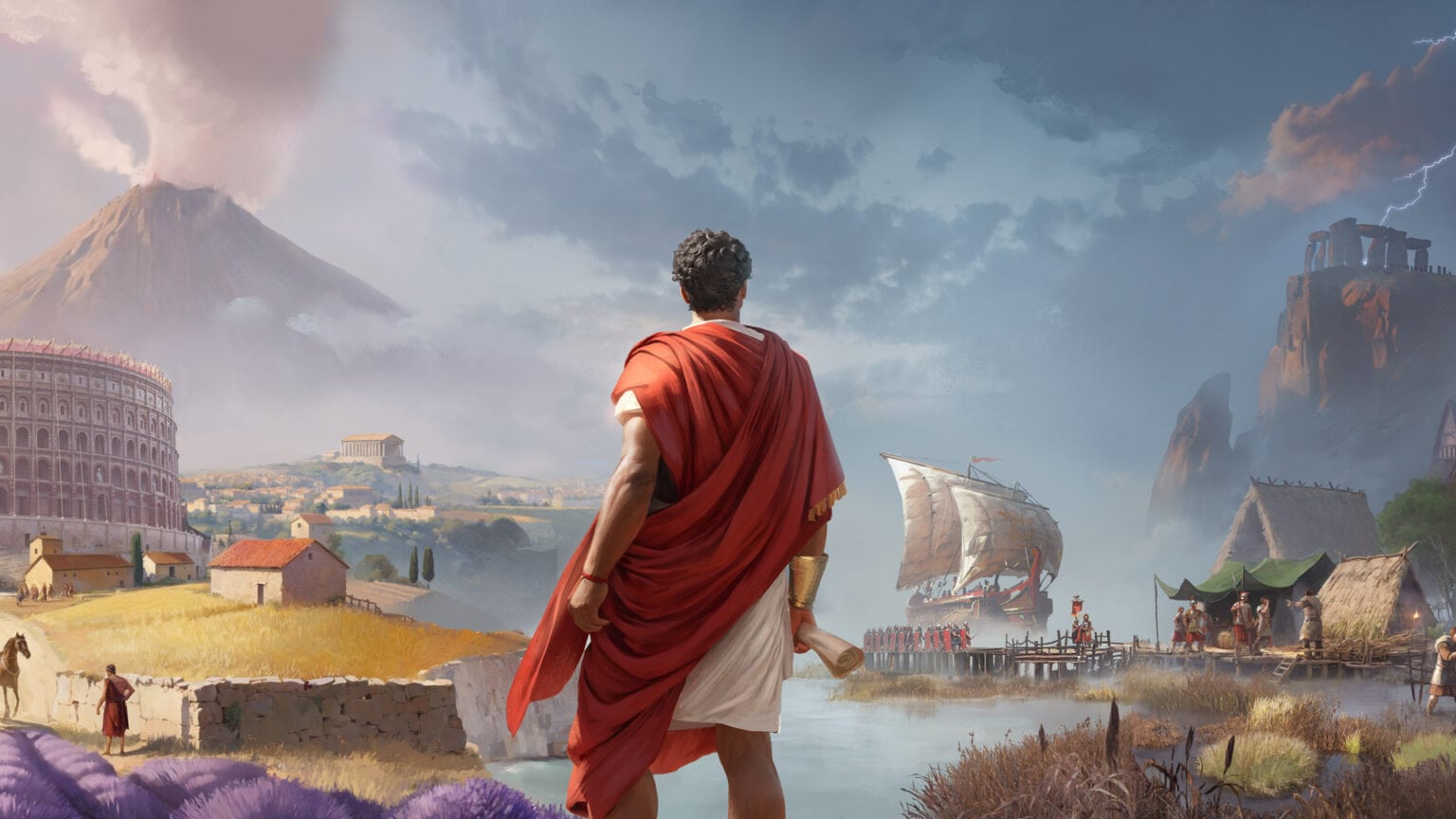It has been a while since an Anno game truly caught my attention. Ubisoft’s long-running series has taken us through the industrial age, into futuristic skylines, and even across distant oceans. This time, it travels further back than ever before, to the might and complexity of ancient Rome. Anno 117: Pax Romana reimagines the franchise in a setting defined by culture, power, and the weight of empire.
This past week, I spent a few hours playing a preview build. The build was enough to glimpse how Ubisoft Mainz is adapting Anno’s formula for this era. What I experienced felt comfortably familiar yet bold enough to carve out something new.
My journey began with a choice between two very different characters. I could play as Marcus or Marcia, both Roman governors with unique perspectives and storylines. Marcus represents the empire’s traditional ideals of strength and authority, while Marcia approaches leadership with reason and diplomacy. The difference isn’t just cosmetic. Each one brings a distinct tone to the campaign and influences how events unfold across the provinces.
For this playthrough, I chose Marcus. His straightforward leadership style appealed to me, and I wanted to see how the empire reacted under his command. From the start, it was clear that character choice mattered more than I expected. Conversations played out differently, and the responses from citizens and advisors reflected his personality. It felt like I was shaping not only a city but a legacy defined by the kind of ruler I had chosen to be.
The difference in atmosphere was immediately apparent. Roman villas shimmered in the sunlight, olive groves swayed along rolling hills, and merchants filled narrow streets with chatter. The new road system allows you to lay paths that curve and bend naturally with the land, and that subtle change makes every settlement look more believable.
After a while, I tried Albion to see how the other half lived. Gone were the sunlit fields; instead, I found rocky landscapes, restless weather, and local tribes not too keen on Roman oversight. The environment itself pushed me to plan differently, testing my ability to adapt.

Core Anno mechanics return in full force: resource chains, citizen management, and trade remain central. However, Pax Romana layers in new systems that suit the empire’s politics.
Every province has a system tracking your control and reputation with the Emperor. Constructing public spaces such as forums and bathhouses helps keep people content, while neglecting them can lead to unrest. It’s a fine balance between governance and public satisfaction.
Religion and culture also factor into that balance. I could dedicate temples to Jupiter and Mars or blend Roman traditions with local beliefs to maintain peace. These spiritual decisions quietly influenced trade efficiency and citizen morale, creating interesting ripple effects across my settlement.
Population management feels more grounded this time. Lower-class workers and elite patricians have distinct needs, and promoting citizens too quickly can cause instability. In one attempt, my food stores ran dry because I advanced housing before securing enough grain. Lesson learned.
Trade has always defined Anno, and in Pax Romana, it carries even more weight. Ships can now be customized piece by piece. You can modify sails, expand cargo capacity, or reinforce hulls for safety.
One mission tasked me with linking Latium and Albion by sea. I built a cargo ship and a smaller escort vessel, assigning each a clear role. Watching them glide across gentle waves as seagulls circled above was a small but satisfying moment. The visual polish in this build is impressive, from the shimmer of the water to the sound of the docks at dusk.
The trade system feels more fluid, too. Routes can be adjusted mid-sail, and merchants seem more reactive than before. It all adds up to a smoother, more immersive experience that rewards thoughtful logistics.

Although the title refers to peace, the Pax Romana wasn’t entirely free of conflict. Beneath the calm, I noticed tension brewing between local leaders and Rome’s central authority. The demo hinted at deeper political systems, with governors quietly competing for influence and citizens occasionally protesting higher taxes.
While large-scale battles weren’t part of this build, I did face several defense events that tested how well my cities could withstand pressure. It reminded me that stability in this game is not permanent; peace requires constant upkeep.
Diplomacy appears to play a greater role as well. I encountered short negotiation sequences and requests from the Senate that could influence future events. The system seems promising, though I hope it grows more complex in the final release.
Performance during my session was generally smooth. Even as my cities grew and trade networks expanded, the frame rate stayed steady. I only noticed a few hiccups when I zoomed out to view the entire province. The user interface feels modernized, with cleaner menus and more readable production chains.
One thing I wanted to explore further was the political layer. The preview teased internal power struggles and decisions that could sway imperial favor, but these elements were still surface-level. If expanded, they could elevate Anno 117 beyond a builder into something that genuinely explores the machinery of empire.

After several hours with Anno 117: Pax Romana, I came away both impressed and hopeful. The game still captures what makes the Anno series so engaging, balancing growth, economy, and public satisfaction, but it also brings new texture and character to the experience.
The Roman setting feels fresh, not just because of the architecture or the togas, but because it frames familiar systems in a new light. Managing faith, loyalty, and imperial politics adds layers of nuance that make every decision matter.
If Ubisoft Mainz can refine the diplomacy system and polish performance ahead of launch, Anno 117: Pax Romana could stand among the franchise’s best. What I played already feels confident, detailed, and deeply immersive.
Rome wasn’t built overnight, and neither was this game. But based on what I’ve seen, Anno 117: Pax Romana might just be the empire worth building when it finally arrives.






